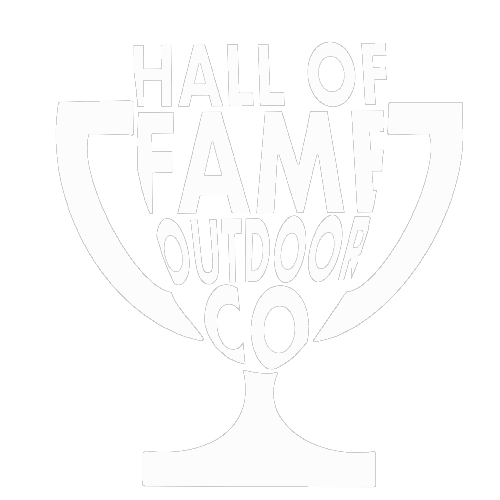Hey Hall of Fame family,
In this week's blog post, I wanted to write about how I keep track of the fish I catch. More specifically, the places I go fishing. Last week, Paul wrote about the little fishing tournament we're having with our friends. Check out that blog post if you haven't already! That's a great way to track your biggest bass throughout a year, plus it introduces a little friendly competition into your friend group. I like to go a little deeper, though (maybe I'm a nerd). In the past, I've used spiral notebooks to handwrite notes on the places I've fished, taking note of things like temperature, water clarity, bait used, etc. I did this consistently for about a year, but I found this way of documentation to be time consuming and somewhat tedious. I also wanted something more visual.
As you may or may not know, I am a GIS analyst at my other job. I create maps, usually depicting soil boring locations, groundwater contours and flow direction, or a PFAS plume, all typically at some military base. I get to use expensive mapping software, and it's capabilities are near endless. Enough boring science words though.
I've always been fascinated with maps. In school, I'd always sit in the desk closest to the globe or large drop-down map that covered the chalk board. I'd spend hours looking at it, daydreaming about all the places it showed. A map tells a story and can influence it's reader. Ultimately, I wanted to combine my love of mapping with my love of fishing without buying an expensive GIS license. That's when it clicked: Google Earth is free.
To track my fishing progress, I use Google Earth's satellite imagery as a basemap. Next, I drop pins on each and every spot where I've been fishing or where I've scoped out a fishing spot. I make the pins small and don't give them a title. The map would be a cluster if I did! I either make each pin green (if I caught a fish), red (if I got skunked), or yellow (if I did not fish and just checked a spot out). I will add a description for each location, where I can include as much data as I want. Typically, I'll include the location's name, along with the city, state, and county it's in. Then I'll note the physical characteristics of a location, like if it has riprap, if there's a ledge, heavy current, water clarity, stuff like that. I also like to note the date, time, and weather conditions of when I'm fishing a certain location. I like to take more detailed notes on how many fish I caught, what species I caught, and what lures I used. I'll leave a section for any other miscellaneous notes, and then I can upload photos for each location. Usually I'll upload a photo of the lake or river itself, and then a photo of a fish from there if I have one.
I like using Google Earth more than handwriting my own notes out. It's a lot more copy/paste, it looks cleaner and more visually appealing than my chicken-scratch notes, and Earth is a better tool for going further in-depth into tracking my fish than just notetaking. This map file is, and will always be, a work in progress. I've spent a lot of time searching for the places I've been, and I'm sure there are some I've missed. I'll be adding location pins to it until I die or can no longer physically fish. A goal of mine is to catch a fish in every state and fill up the USA with pins.
I hope you found this blog post informative and were able to take something from it! I'm sorry if it's a little heavy or on the boring side, I just like taking a slightly analytical approach to my fishing career.
As always, tight lines and love the adventure!
Erik Hoffman, Hall of Fame Outdoor Co

